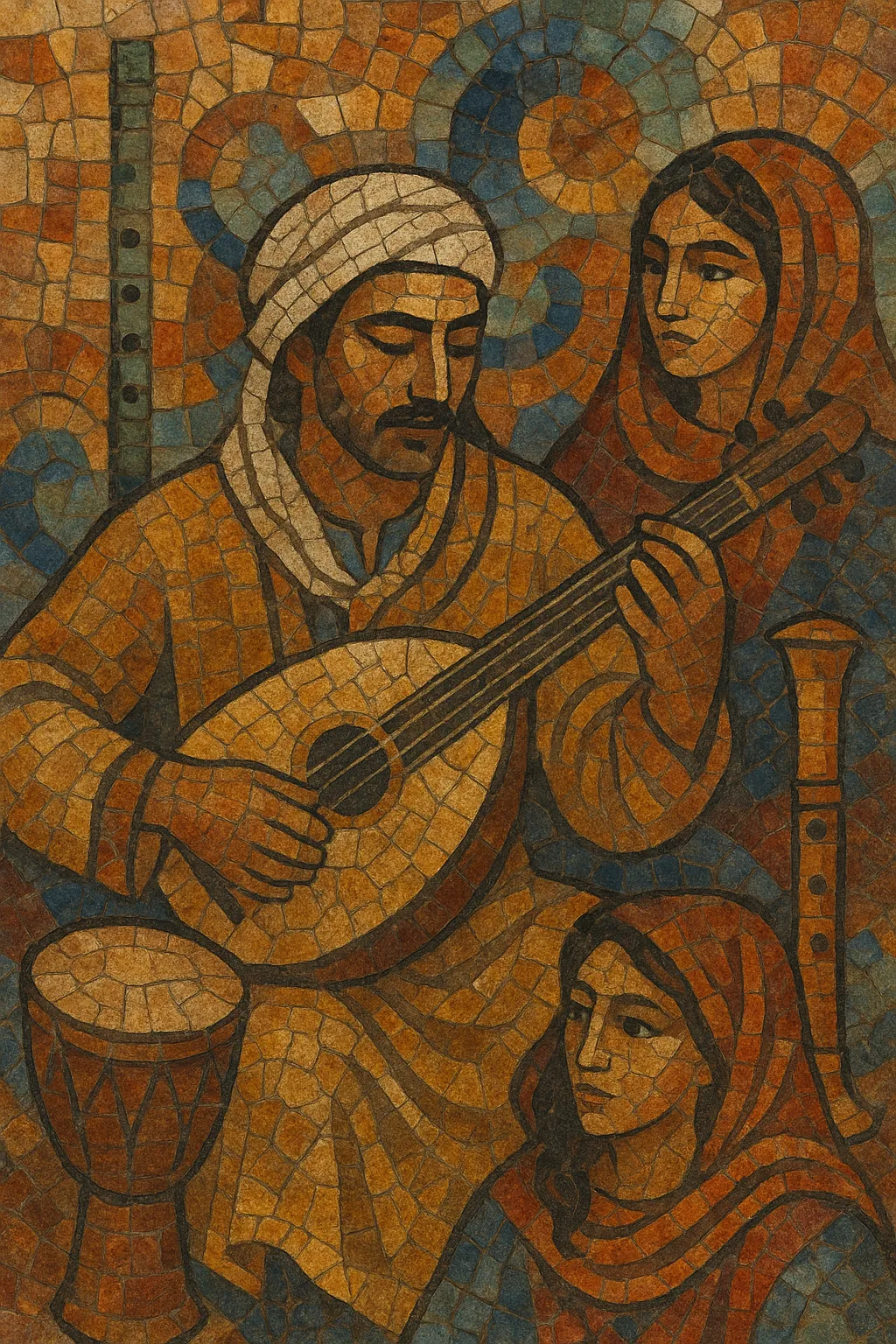Kabyle music is the traditional and modern popular music of the Kabyle (Amazigh/Berber) people of northern Algeria. It is primarily sung in the Kabyle variety of Tamazight and is known for poetic, metaphor-rich lyrics that address love, nostalgia, exile, social life, and cultural/political identity.
Musically, it blends Amazigh folk idioms with urban North African songcraft: modal melodies, ornamented vocals, and lilting dance rhythms (often in 6/8 and 2/4) are supported by acoustic guitar, Algerian mandole, banjo/mandola, bendir and darbuka frame/hand drums, gasba (end-blown flute), violin, and, in modern settings, accordion, bass, and drum kit. The style ranges from intimate voice-and-guitar ballads to high-energy, wedding-ready ensembles, and has evolved to incorporate chanson and pop/rock textures while retaining a distinct Amazigh identity.
Kabyle musical practice predates recording by centuries, rooted in Amazigh oral poetry (asefru), call-and-response singing, community dances, and ritual/wedding repertoires accompanied by frame drums and flutes. Modal melodies and melismatic vocal lines reflect broader North African and Andalusi spheres while retaining distinct Kabyle poetic forms and prosody.
With migration to Algiers and Paris, Kabyle artists began recording on 78 rpm discs. Pioneers such as Cheikh El Hasnaoui and early Slimane Azem shaped a recognizable song form—voice with guitar/mandole and light percussion—translating village aesthetics to cafés and cabarets of the diaspora. This period marks the emergence of Kabyle music as a modern popular genre.
After Algerian independence (1962), Kabyle song flourished at home and abroad. Slimane Azem’s satirical and nostalgic songs became touchstones, while Lounis Aït Menguellet and Djamel Allam refined the poetic singer‑songwriter idiom. In 1973–76, Idir’s “A Vava Inouva” brought global attention, showing how Kabyle timbres and 6/8 lilt could resonate in international folk-pop markets.
The Berber Spring (1980) catalyzed cultural activism, and songs took on stronger identity and rights themes. Ferhat Mehenni (Imazighen Imula) and Matoub Lounès embodied politically engaged artistry. Arrangements expanded with violin, keyboards, bass, and drum kit; Takfarinas popularized dance‑pop fusions using the Algerian mandole and his custom “Yal” instrument. The 1990s civil conflict deeply affected the scene—most tragically with the 1998 assassination of Matoub Lounès—yet the music persisted as a voice of resilience.
Kabyle music continues to thrive in Algeria and the French diaspora, intersecting with worldbeat, chanson, pop-rock, and acoustic folk. Classic repertoires remain central at weddings and community events, while younger artists modernize production, collaborate across North African and European scenes, and sustain Kabyle language and identity through contemporary songwriting.


